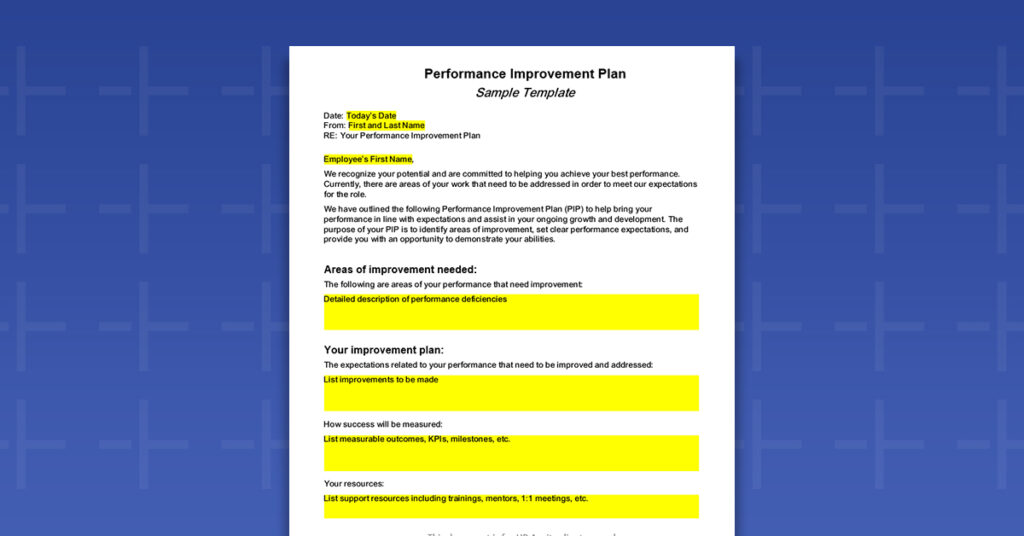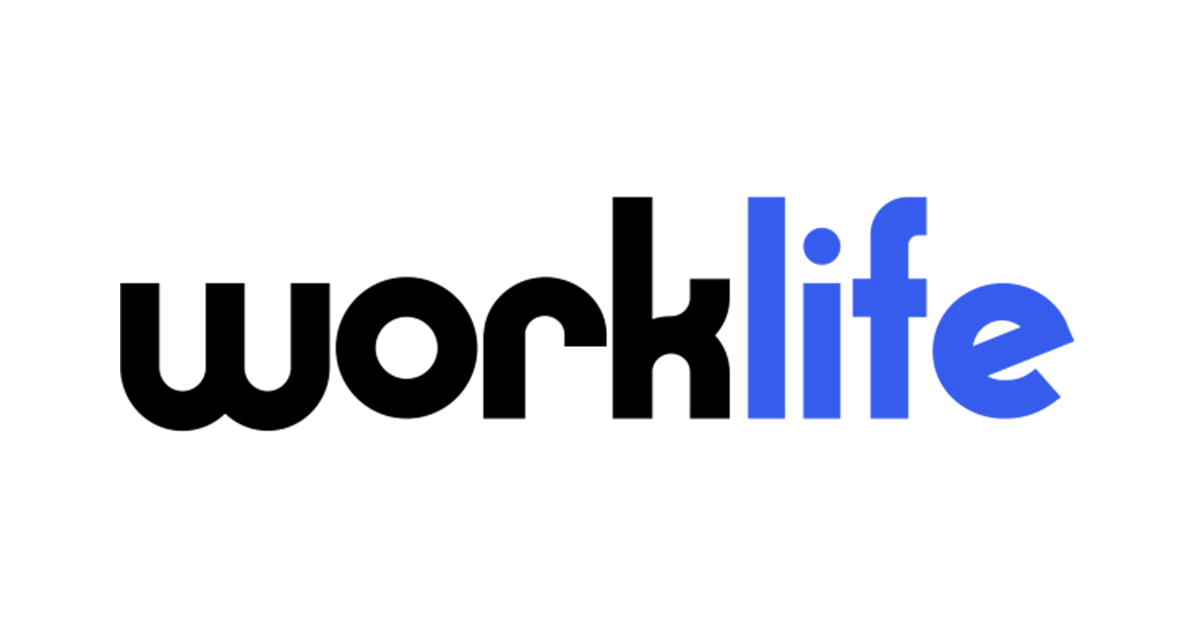What is a performance improvement plan?
Sometimes we all fail to live up to expectations. That’s where a performance improvement plan (PIP) comes in.
Performance improvement plans are structured documents used by organizations to address (and remedy) an employee’s underperformance or failure to meet job expectations. They serve as a constructive tool aimed at helping employees, rather than as a punitive measure.
PIPs are usually created in partnership between the HR team, supervising manager, and employee whose performance needs to be addressed. In a performance improvement plan, management outlines clear and measurable goals, expectations, and a timeline for improvement. These plans provide a roadmap for the employee to follow, along with regular checkpoints to assess progress.
When to use a performance improvement plan
Performance improvement plans should always be tailored to the individual, and knowing when to use one will depend on the circumstances of the situation. Ultimately, it is at the discretion of an employee’s manager and their HR team to determine when a PIP is appropriate, based on the specific circumstances.
It’s also important to note that performance improvement plans are designed to assist employees in meeting expectations for their role. A PIP should never be the first step of addressing underperformance; they should only be used after initial conversations did not yield results. To this end, PIPs are not designed to be punitive, or function solely as a paper trail for managers who want to fire someone on their team. While PIPs can be an important compliance step, they should always be used with the goal of genuine improvement.
Here are some common scenarios when a performance improvement plan may be warranted:
- Subpar job performance: When an employee consistently falls short of the expected performance standards and fails to meet key performance indicators (such as those outlined in an employee’s job description, or yearly objectives).
- Repeated missed deadlines: If an employee frequently misses deadlines or struggles to complete tasks within the specified timeframes.
- Unprofessional conduct: In cases of unprofessional behavior, such as insubordination, harassment, or violations of company policies.
- Skills gap: When an employee’s skills do not align with their job requirements or if they are not keeping up with industry best practices.
- Consistent attendance problems: If an employee frequently misses work, arrives late, or takes excessive, unapproved leaves.
- Failure to adapt: In situations where an employee is struggling to adapt to changes within the organization (for example, a reorganization or acquisition by another company).
It is worth restating that performance improvement plans are designed to critique and assist, not scold. It’s also true that high performing employees sometimes need help in a particular area, whether that’s to improve a set of skills, or because something has them distracted from their work.
Download your own performance improvement plan template
For organizations considering implementing performance improvement plans, it’s important to have a PIP template ready to ensure a structured and fair process. Download a sample letter and template here.
How to create a performance improvement plan
Now that we’ve covered when to use a performance improvement plan, it’s time to dive into how to design and implement one. Here are the key steps to guide you through the process:
Step 1: Identify the problem areas
Begin by identifying the specific areas of an employee’s performance that require improvement. This could include areas such as productivity, quality of work, attendance, or specific job-related skills.
Step 2: Collect relevant data
Next, gather data to support your assessment of the employee’s performance issues. This data may include past performance reviews, reports, and any other relevant documents. Lean on an employee’s job description and yearly objectives or goals to identify where the gaps are.
Step 3: Communicate clear expectations
Clearly define the expectations for performance improvement. These expectations should be specific, measurable, achievable, relevant, and time-bound (SMART). Remember, an improvement plan is a roadmap, not a list of grievances.
Step 4: Document the plan with a PIP template
Document the PIP in writing, using a structured template (hint, we have one you can use below). This written plan should outline the employee’s goals, the timeline for improvement, and any consequences for noncompliance or not meeting the goals.
Step 5: Schedule a meeting
Arrange a private meeting with the employee to discuss the PIP. While HR should be involved in the creation of an improvement plan, meetings are generally between the supervising manager and employee. The goal here is to introduce the plan and get buy-in from the employee. It’s often helpful to have a formal acknowledgement of the plan in writing.
Step 6: Identify resources and support
Determine what resources, training, or support the employee may need to achieve their PIP goals. This might include additional training, mentorship, or access to specific tools. These too should be time bound.
Step 7: Set monitoring and evaluation points
Specify how progress will be monitored and assessed throughout the PIP. This can include regular check-ins, evaluations, or performance metrics agreed on between the manager and employee.
Step 8: Review and adjust as needed
Continuously review the employee’s progress and provide constructive feedback. Be open to adjusting the PIP if necessary to ensure its effectiveness.
Benefits of using performance improvement plans
The goal of improvement is nebulous without some sort of formal structure. Without an agreed upon plan in place, the initiative is likely to fail. This is where performance improvement plans offer real benefits for organizations and employees.
- Clarity and expectations: PIPs provide a clear and well-defined roadmap for employees to understand their performance deficiencies and how to improve. This clarity eliminates any ambiguity about what is expected and when.
- Structured improvement: PIPs offer a structured approach to addressing performance issues. They break down the improvement process into manageable steps, making it easier for employees to focus on specific areas that need enhancement.
- Employee retention and morale: Offering employees the opportunity to improve their performance can lead to better retention rates. Furthermore, as employees witness their progress, it can boost their morale and job satisfaction.
- Legal protection: PIPs help organizations adhere to legal requirements when addressing performance issues, reducing the risk of legal disputes and potential liabilities.
- Fairness and transparency: PIPs demonstrate that employees are treated fairly and given a fair chance to improve before facing more severe consequences. This promotes transparency and trust in the workplace.
- Improved employee-employer relationship: PIPs encourage open dialogue between employees and employers, fostering a healthier and more constructive relationship. It shows that the organization is invested in its employees’ success.
- Second chance: Sometimes we all get a little off track. PIPs offer employees a second chance to meet expectations and succeed in their roles, which can be a motivating factor for them to strive for improvement.
How to implement a performance improvement plan template
If you made it this far, chances are you’re either looking to implement PIPs into your organization, or overhaul the process you do have currently. Just as every performance improvement plan needs to take into account the unique needs of the individual, no two organizations are going to have the same PIP process.
Here are some useful tips to keep in mind when implementing a PIP program:
- Prioritize communication: Timely, clear, and transparent communication between managers and employees is critical for any performance improvement effort. These conversations can be difficult and uncomfortable, but being clear in acknowledging the performance gaps and consistently following up on progress is crucial. Set expectations for what effective communication looks like.
- Establish clear guidelines and policies: Start by creating well-documented guidelines and policies for the use of PIPs within the organization. This will help keep your PIP process standardized and fair for all employees. Consult with your legal team to ensure your policies align with compliance requirements.
- Train managers and HR personnel: No one grew up learning how to create and implement PIPs in school. Even if your team has used PIPs before, it’s helpful to provide training so your managers and entire HR is on the same page with when and how to initiate and administer PIPs. This training should cover legal compliance, effective communication, and how to create fair and actionable PIPs.
- Identify performance issues proactively: Encourage managers to identify performance issues as early as possible. Promptly address these issues to prevent them from escalating and becoming more challenging to resolve.
- Encourage flexibility: Managers and HR should be open to making adjustments to the PIP if it makes sense to do so. For example, it may not be possible for an employee to achieve certain milestones in time due to some unforeseen or previously unknown circumstance. Flexibility in the details is essential to ensure the larger objectives are met.
- Consistency and fairness: Ensure that PIPs are applied consistently and fairly across the organization. This promotes transparency and trust between employees, management, and HR teams.
- Evaluate and learn: Use outcomes of individual performance improvement plans to evaluate the overall effectiveness of your PIP program. Ask for and consider feedback from all parties about how they would improve the PIP process. Adjust as needed.
Strengthen your performance improvement plan with HR Acuity
It’s nice to think we all perform at our best and constantly exceed expectations every day. However, reality would suggest otherwise. While we all have off days, there are occasions when an employee isn’t living up to the goals and objectives the organization has for their role. Performance improvement plans can be a useful tool when a team member requires a nudge in the right direction or needs to brush up skills in a particular area.
PIPs are best implemented in a thorough, thoughtful, and standardized way. In other words, every organization should be using a PIP template.
Don’t have one? HR Acuity has you covered. Download your Performance Improvement Plan Template here.




